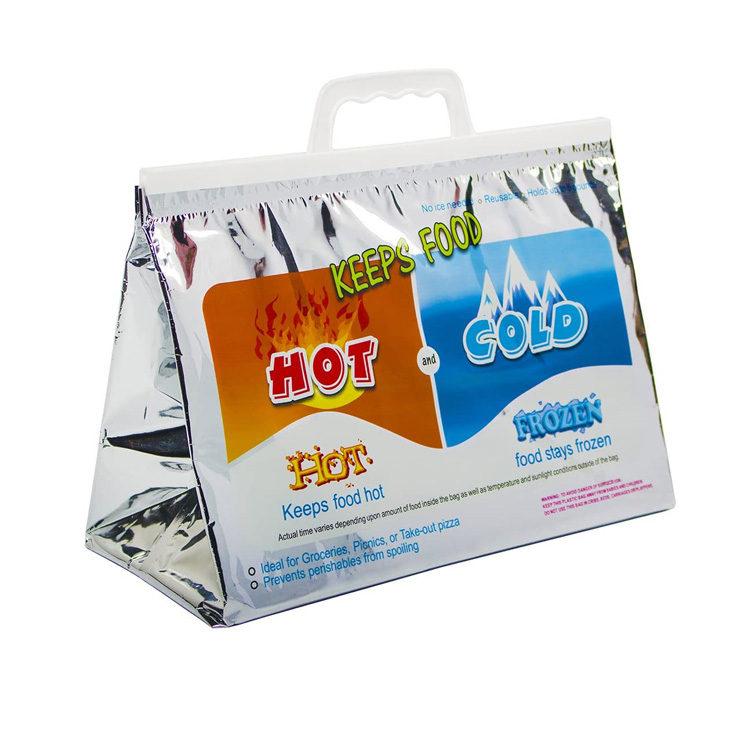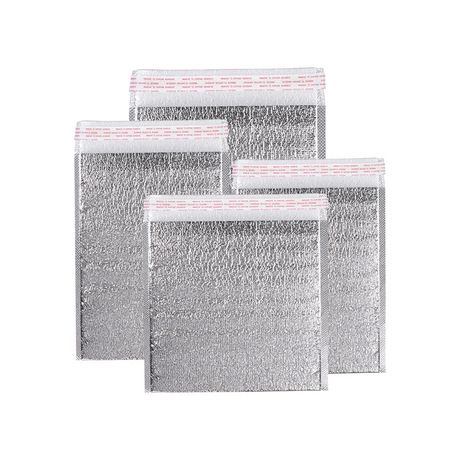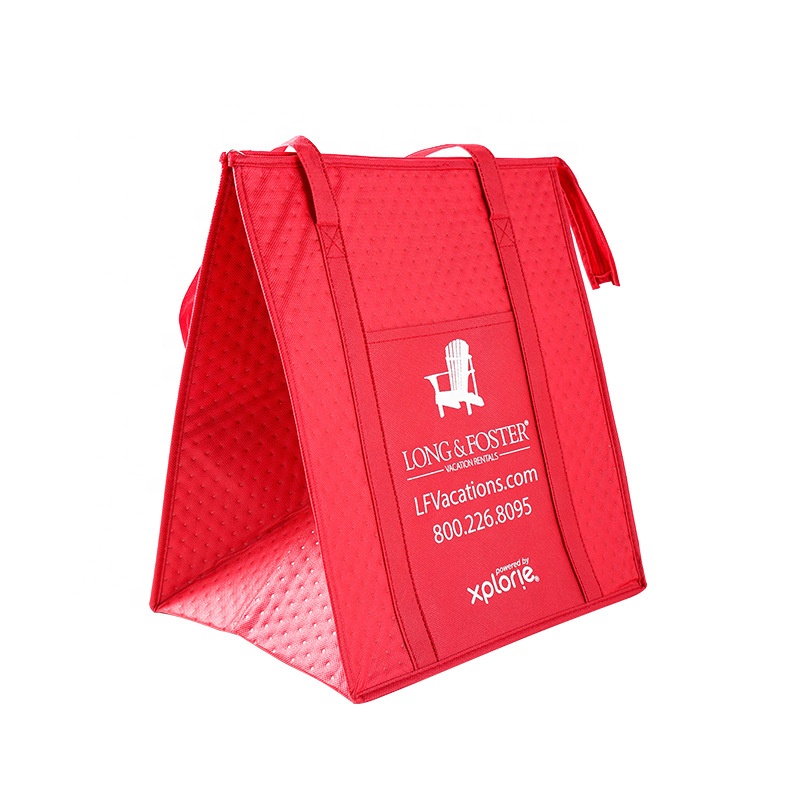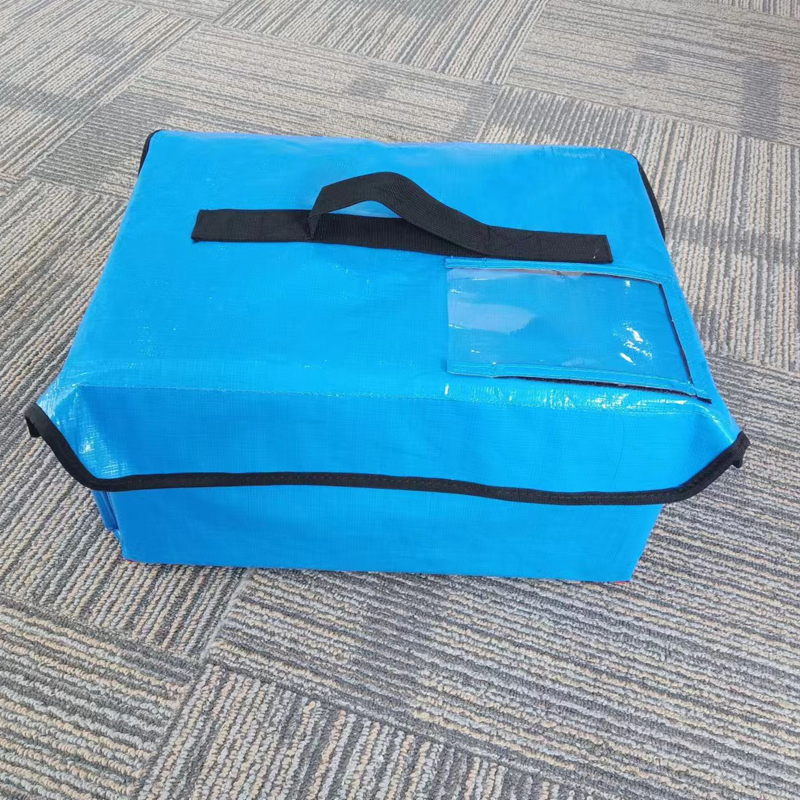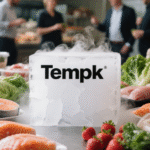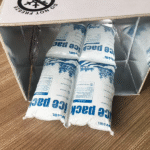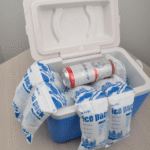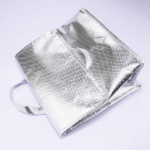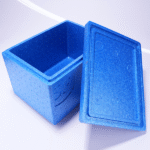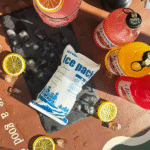Wenn globale Lebensmittelversorgungsketten expandieren, Kühlakkus für Lebensmittel sind für die Erhaltung der Frische von entscheidender Bedeutung geworden, Abfall reduzieren, und Erfüllung der Verbrauchererwartungen. Von Mahlzeiten bis hin zu Pharmazeutika, Diese Kühllösungen müssen eine zuverlässige Temperaturregelung liefern und gleichzeitig Umweltprobleme behandeln. Dieser Artikel untersucht die neuesten Fortschritte, Herausforderungen, und Tempks bahnbrechende Trockeneis -Technologie, die kalte Kette Logistik umgestaltet.

1. Materialinnovationen zur Verbesserung der Kühleffizienz
Moderne Kühlakkus nutzen modernste Materialien, um die Leistung zu optimieren:
-
Bio-basierte Phasenwechselmaterialien (PCMs): Kokosöl und Sojawachs-Derivate pflegen -18° C bis 5 ° C. für 72+ Std., übertreffen traditionelle Gelpakete von übertreffen 40%.
-
Biologisch abbaubare Schalen: PLA-PBAT-Mischungen zersetzen sich in 6 bis 12 Monaten unter industrieller Kompostierung, Eliminierung der mikroplastischen Verschmutzung.
-
Aerogelverstärkte Liner: Kieselsäure -Lufthegel -Verbundwerkstoffe reduzieren die Wärmeübertragung durch 55% Beim Hinzufügen von minimalem Gewicht (0.15g/cm³).
2. Kritische Anwendungen in der gesamten Lebensmittelindustrie
-
Essenslieferung: Ungiftige Gelpackungen mit UV-beständiger Beschichtung halten die Zutaten frisch 0–4 ° C für 48-Stunden-Sendungen, Verderb durch 30%.
-
Meeresfrüchte Transport: Trockeneis-Alternativen mit Salzhydrat-PCMs bleiben erhalten -25°C für transkontinentale Flüge, Konservierende Textur und Geschmack.
-
Milchprodukte: Antimikrobielle Einlagen in wiederverwendbaren Packungen hemmen das Bakterienwachstum und sorgen gleichzeitig dafür, dass sie erhalten bleiben 2–4 ° C für 96 Std..
3. Nachhaltigkeitsherausforderungen und Branchenreaktionen
-
Lücken recyceln: Nur 15% der herkömmlichen Gelpacks werden aufgrund der Mischmaterialkonstruktion recycelt. Die Monomaterial-Rucksäcke von Tempk erfüllen dies 100% Recyclingfähigkeit mit geschlossener Schleife.
-
Energieverbrauch: Einfrieren von Konten für 70% von CO2-Fußabdrücken. Solarbetriebene Kühllagerzentren reduzieren die Emissionen um 50%.
-
Regulatorischer Druck: FDA -FSMA -Regel 204 und die EU-Richtlinie über Einwegkunststoffe drängen auf die Einführung rückverfolgbarer Produkte, ungiftige Materialien.
4. Intelligente Technologien gestalten die Zukunft
-
IoT -Sensoren: Bluetooth-fähige Temperaturlogger (± 0,2 ° C Genauigkeit) Synchronisierung mit Apps zur Echtzeitüberwachung der Kühlkette.
-
Selbstregulierende PCMs: AI-gesteuerte Materialien stellen Schmelzpunkte an, die auf externen Temperaturen basieren, Verlängerung der Kühldauer durch 60%.
-
Essbare Kühlakkus: Mit natürlichen Konservierungsmitteln angereicherte Gele auf Stärkebasis zersetzen sich sicher und verhindern gleichzeitig das Austrocknen der Lebensmittel.
5. Tempks Trockeneisbeutel: Kühlketten-Exzellenz neu definiert
Tempks Zeroice Pro -Serie setzt neue Maßstäbe mit:
-
Ultra-niedrige Kohlenstoffformel: Gemacht aus 100% recycelter Co₂, Diese Pakete erreichen -78°C ohne gefährliche Rückstände, Ideal für hochwertige Sendungen.
-
Wiederverwendbares Design: Standhalten 500+ Einfrieren-Auftau-Zyklen (3x Branchendurchschnitt) und verfügen über RFID-Tags zur Lebenszyklusverfolgung.
-
Null-Abfall-System: Treten Sie Tempks bei Coolcycle -Programm– Geben Sie gebrauchte Packungen zur CO₂-Rückgewinnung und Desinfektion zurück, Erreichen 98% kreisförmige Effizienz.
Indem wir extreme Leistung mit Nachhaltigkeit verbinden, Die Trockeneisbeutel von Tempk sorgen für Frische und fördern gleichzeitig die Verantwortung für den Planeten.









